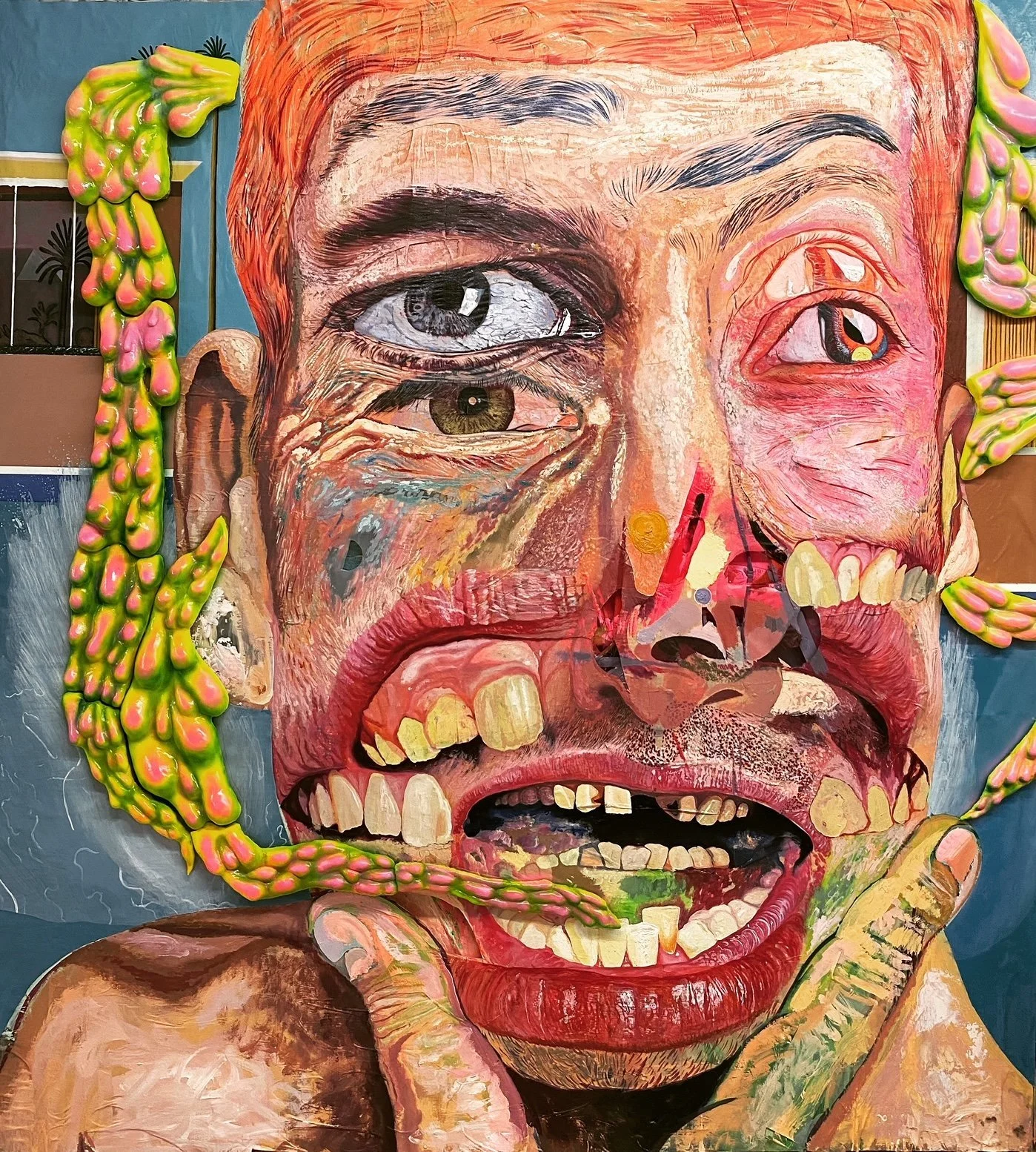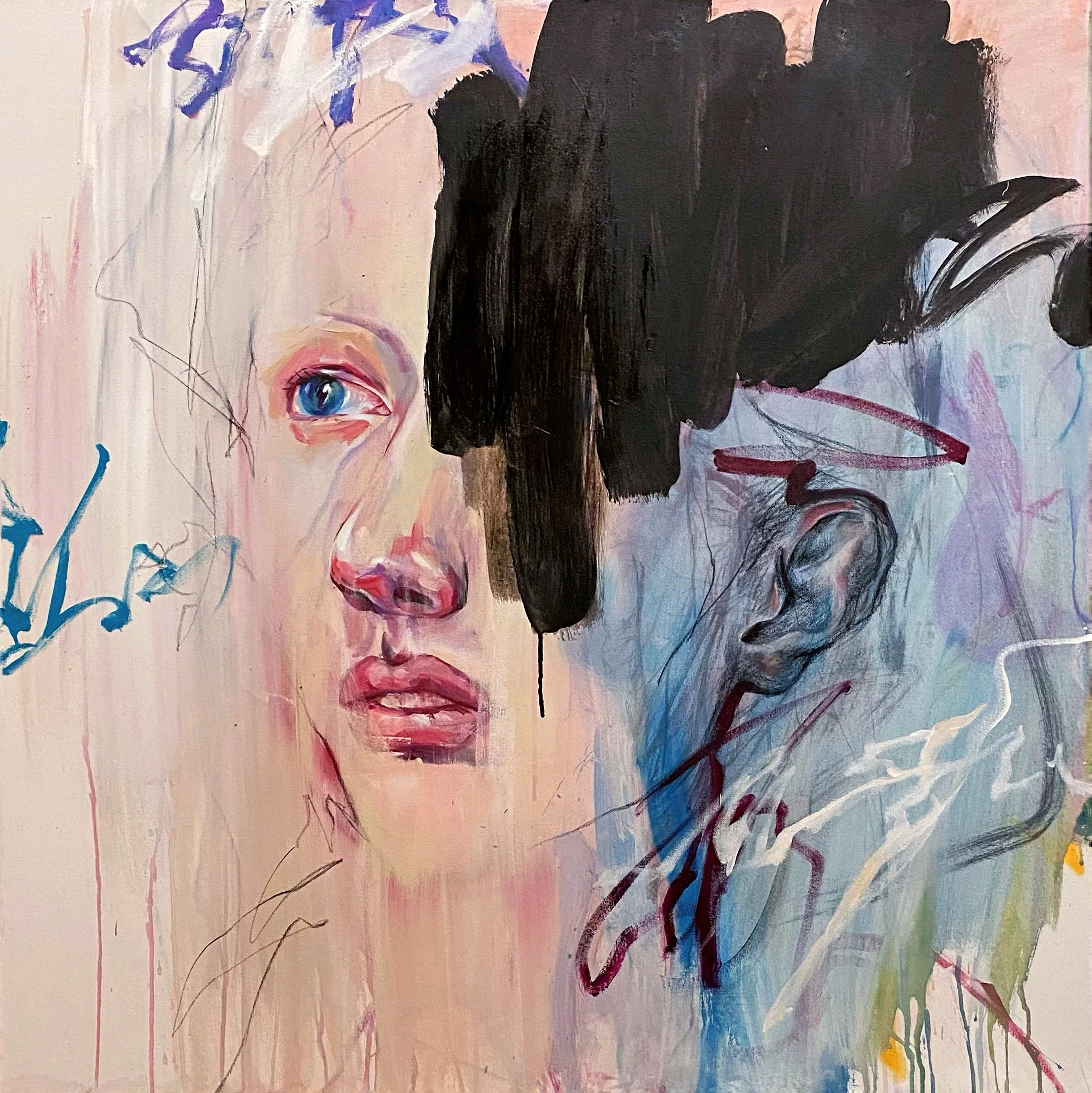10 Questions with Patrick Vandecasteele
Patrick Vandecasteele has been practicing painting and drawing for over ten years.
Since 2012 he has exhibited his work extensively both in France and in the UK.
Patrick Vandecasteele
ARTIST STATEMENT
Patrick Vandecasteele explores the physical, psychological, and social posture of humans, the various costumes they wear to dress their intimate hiatuses.
He tries to restore the spontaneity of human posture, fleetingness, the unconscious that inhabits a body and its outfit, the links between composure and thoughts, gestures and intentions, mental melee.
He paints our struggle to face others, approach others, the struggle between our multiple intimacies, our imperative of life in society, submission to servitudes, and the imperative need for autonomy and individuality.
Meeting © Patrick Vandecasteele
GET YOUR LIMITED EDITION PRINT >>
INTERVIEW
Could you introduce yourself to our readers? Who are you, and how did you become a painter?
I have been drawing since childhood and naturally turned to applied art studies, but painting came to me later, around the age of 30. Life allowed me to devote myself to it regularly from the age of 40, and it is at this age, I started oil painting. I pursue creative work that continually tries to combine a progression in technical mastery and a plastic proposal related to the medium of oil painting.
What is your aim as an artist?
That of accomplishing an interior voyage, a transcendence. Painting is a huge field of experimentation. Venturing into it is a bit like a lone sailor setting sail on his boat and advancing through the immensity. For me, the work of an artist is also similar to a fight. Painting can be a formidable adversary, you take hits, but you also surpass yourself. Each progress is a small victory over existence. Each little mystery understood from the act of painting illuminates daily life and allows one to stand up in front of the world. I am happy when I feel I have passed a milestone in my journey as a painter. It seems a bit selfish, but on the other hand, the intensity of the process and the energy it requires continually forces me to be open to the world, to observe nature and people, and to try to understand them.
Man © Patrick Vandecasteele
Can you tell us about the process of creating your work? What is your artistic routine when working?
Ten years ago, I discovered contemporary dance, and it was love at first sight. Regularly attending dance and theater places made me aware of the importance of postural intermediaries, seizing moments between dances, transitions, breaths, and preparations for the gesture in what they can signify about our interiority and social links.
The discovery of this vast field of expression connected me to the desire to paint human posture to show the infinite nuances that constitute our presentation to the world and our relationship to others. I have no particular routine, but I like to work on several paintings simultaneously by painting directly without preparatory drawing in a succession of superimposed layers.
Your work reminds me of Francis Bacon and perhaps even Adrian Ghenie. What artists influence or inspire your work most?
You really hit the nail on the head! These two are in my pantheon. I particularly like the concept of Francis Bacon's "painting accidents," which are the embodiment of plastic expression in painting. Knowing how to leave representation by technique in favor of the power of what the painting will produce in a single gesture without being able to really predict its result is part of my current attempts.
Adrian Genie fascinates me above all by his path and his research. He went from intense figuration to great plastic ambition through daring composition while retaining figurative markers like a climber's holds in the rock. I saw him on a video throwing paintballs on his paintings. He has great freedom, and I still have a long way to go.
I also find Giacometti's paintings fascinating, and some of Gustave Courbet's, like the Ruisseau du Puits Noir, a kind of absolute masterpiece.
Man On The Beach © Patrick Vandecasteele
Fire Discovery © Patrick Vandecasteele
In your paintings, you almost always depict human beings with their postures and uniforms. What are you trying to communicate with your art? What themes do you pursue?
I deploy and continue to explore humans' physical, psychological, and social posture, the various costumes worn by humans to dress their intimate hiatuses.
I must succeed in painting our struggle to face others, to approach others, the struggle between our multiple intimacies, between our imperative of life in society, of voluntary submission to servitude, and the imperious necessity of autonomy, of individuality.
How do you get ideas for each piece of art? And how do you translate the ideas into artworks?
I spend hours watching live performance videos to capture the postures that speak to me and take screenshots. Sometimes I combine several different ones and create my own scene. This leads to “alone on stage,” duets, trios.
Each Side © Patrick Vandecasteele
Do you have an essential philosophy that guides you in your creative expression?
I try to bring closer the gesture-subject by the gesture-painted to restore the spontaneity of the human posture, its fleetingness, the unconscious that inhabits a body and its holding, and the links between countenance, thoughts, gestures, and intentions, failed containment of impulses and words, mental melee.
I like to think that the act of painting can be compared to a dance movement on the canvas.
Over the past 12 months, we have witnessed a growing number of online exhibitions and live events. What do you think of the recent changes in the art world? Do you miss the art world as it was before the pandemic, or do you see more opportunity now?
I think the pandemic has accelerated a process that was already underway before. The development of digital technology is unstoppable, and it changes in part the way art is shown, known, and communicated. It's rather a chance for emerging artists because it's easier for them to show their work. There is also a whole field of purely digital creation that invests quite naturally the presentation by screens.
But for painting, drawing, sculpture, it is also important to really confront the work. The dimension, technique, and especially the plastic nuances can only be fully perceived in front of the work, with the physical sensation of being immersed in it, of being connected to it.
Three Men © Patrick Vandecasteele
Do you have any upcoming shows or collaborations you are looking forward to?
I now have a set of coherent paintings and drawings that I will show. I am therefore entering a phase where I will propose more and more my work, but also, why not bring together other artists in the same process as me to set up show projects together.
And lastly, what is one lesson you learned in the past year?
I am among those who were deeply shocked by the brutal closure of cultural places. Thousands of artists around the world had their exhibitions or showed canceled. Galleries, museums, theaters had to close, while culture is one of the activities with the greatest experience in a public welcoming, which could have been continued in complete safety by mastering gauges and shielding measures.
A year ago, we were unaware of the degree of freedom that we are deprived of today. I am stunned by the fragility of what was the joy of living in a world of culture. Today everything has to be redone. The road will be long and difficult.
Artists have a great role in keeping culture as an alternative to enslavement by work and consumption.


























